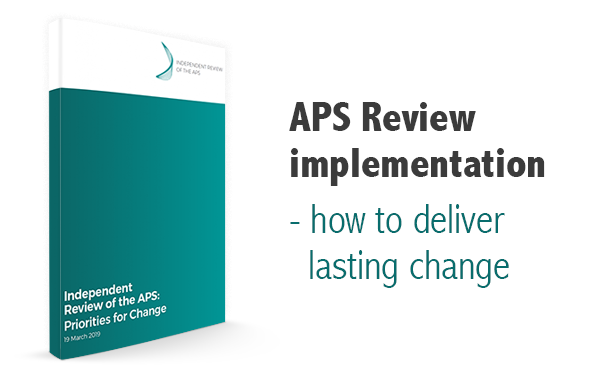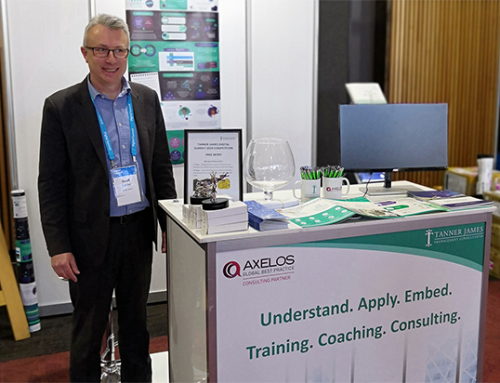On 19th March the APS review shared its interim findings in the report Priorities for Change*. Aside from the findings, which have drawn out the usual bunch of Canberra has-beens and naysayers, the report says“…regardless of the richness of ideas about what needs to happen to prepare the APS for the future, making it happen is a very different matter….In finalising this review, the panel will therefore give equal consideration to how change is implemented, not just what changes are required.”
It goes on to set out some key principles being considered in relation to implementation. This blog examines those principles.
APS reform as a transformation program
The review notes that “reforms seen to have had most impact are characterised by strong APS and political support, a sound and transparent case for change, and clear accountability for implementation”. It goes on to say that it “will propose a transformation program to ensure delivery of recommendations and to guide and drive future APS reforms”.
I fully agree. (I would argue that perhaps the review should propose a series of transformation programs, but at this point that might be splitting hairs.) I think the trick here is not just to call it a transformation program, but to actually establish and manage it as such. I would strongly advocate that global best practice is used for this purpose – Managing Successful Programmes (MSP®). It has already been used very successfully by the APS, but if you want credentials, how about the fact it was used to organize the greatest show on earth – the 2012 London Olympics? (You can download the case study here.)
Principles for successful large scale transformation
The review sets out six principles it has identified for successful change. Here there are with my take on them:
1. committed leadership to ensure reforms are owned and embodied at senior levels across the service – and leaders act consistently with the reform directions
Essential. The Secretaries’ APS Reform Committee could perhaps form the Sponsoring Group, with a Band 2-3 Program Board as the engine room to both orchestrating the delivery of reform and ensure they stick – i.e. that real change occurs at the coalface.
2. clear prioritisation of reforms, focussed on the most important things at all times with scope to take stock and adjust priorities as necessary
Also essential. But not one-dimensional – prioritisation within multiple work streams will be required. I’ll use the “a-word” here: let’s be agile. My main suggestion here is to use Tranches as the mechanism to take stock and adjust – i.e. deliver the reforms as series of step changes. This means people will see real progress achieved in months not years.
3. a transformation leader with the resources and influence to drive and coordinate delivery
In other words, appoint an SRO. By which I mean Senior Responsible Owner (not Official – an unfortunate dilution that has crept into the Canberra lexicon). Must be at least a Deputy Secretary. Maybe appointing the role as an Associate Secretary would be a good fit?
4. deep engagement of people across the service – at all levels and in all places – in developing and implementing changes, supported by compelling communication and investment in capability building to underpin ambitious reform
Love it. Let’s have a Stakeholder Engagement Strategy that turns the reforms into a pull-model not a push-model. In other words, APS staff don’t feel like they are having reforms done to them, or imposed on them, but rather they drive the definition of what is actually needed and are chomping at the bit to transition the new changes into their workplaces.
5. short, medium, and long-term metrics for success, including specific indicators of impact, so implementation remains focussed on delivering outcomes, rather than ticking off recommendations
Yes. Define them tranche by tranche. I’ll go a step further than outcomes – lets define and deliver benefits. Real, quantifiable, measureable improvements. Not necessarily financial ones. Not mealy-mouthed ones people can wriggle out of. Real, hard, tangible positives. These should be the drivers for reform.
6. enduring funding, resources and support, including from government, to enable genuine transformation
Lets see a proper Resource Management Strategy. Fund and resource the program. Give the SRO real authority, real money and real people. Don’t put funds into departmental budgets. It’ll kill progress.
Do you agree?
Please comment on the blog itself or via LinkedIn.
Feel free to call me personally on 0407 404 688 or email me at john.howarth@tannerjames.com.au.
*© Commonwealth of Australia, Department of the Prime Minister and Cabinet, APS Review: Priorities for change






Leave A Comment